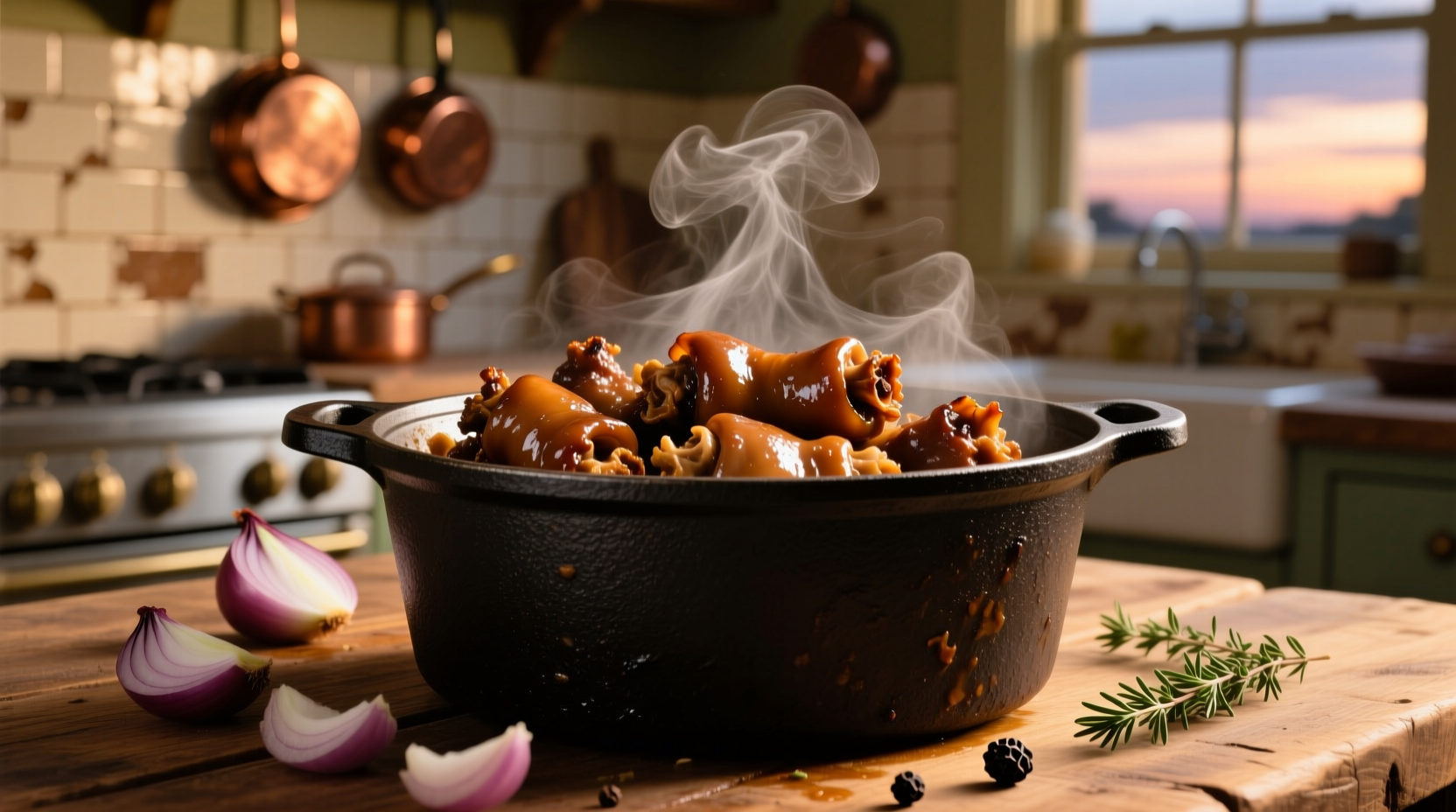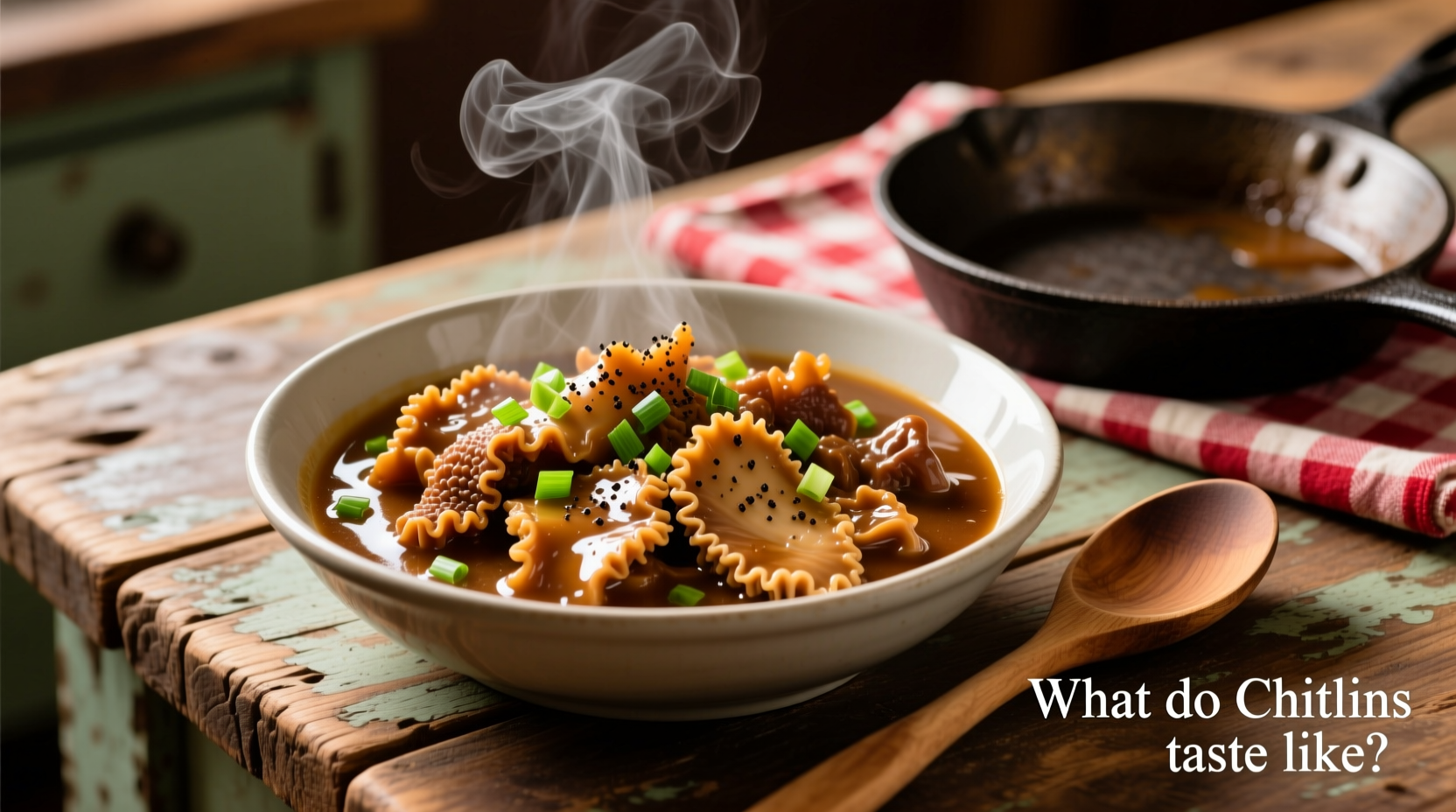Curious about this traditional soul food staple? You're not alone. Many home cooks and adventurous eaters wonder what to expect before trying chitlins for the first time. Understanding their distinctive flavor helps you appreciate why they've remained a cherished dish across generations despite being an acquired taste.
What Exactly Are Chitlins?
Chitlins—short for chitterlings—are the small intestines of pigs, meticulously cleaned and slow-cooked. This dish carries deep cultural significance, particularly in Southern U.S. cuisine and African American culinary traditions, where resourcefulness transformed humble ingredients into nourishing meals. Historically, chitlins emerged during times when communities made the most of available resources, turning what might be considered scraps into flavorful comfort food.
Deconstructing the Flavor Experience
When properly prepared, chitlins deliver a surprisingly nuanced taste experience. The primary flavor resembles rich pork broth with subtle earthy undertones. Think of the savory depth of slow-simmered bone broth combined with the satisfying chew of premium sausage casing. Many describe the taste as "meaty without being overly strong" when cleaned thoroughly and cooked with traditional seasonings like onions, garlic, and bay leaves.
The texture plays a crucial role in the overall experience. Well-prepared chitlins offer a pleasantly chewy yet tender bite—somewhere between al dente pasta and slow-cooked tripe. This distinctive mouthfeel contributes significantly to their appeal among enthusiasts.

How Preparation Transforms Taste
What do chitlins taste like when improperly cleaned versus expertly prepared? The difference is dramatic. Traditional preparation involves multiple cleaning stages to remove any residual matter, followed by hours of simmering with aromatic ingredients. This process transforms what could be off-putting into a deeply flavorful dish.
| Preparation Method | Flavor Profile | Texture Characteristics |
|---|---|---|
| Traditional slow-cooked (6+ hours) | Rich pork essence with herbal notes | Tender with satisfying chew |
| Pressure-cooked (modern method) | Milder, cleaner pork flavor | Softer, more uniform texture |
| Insufficiently cleaned | Unpleasantly strong, off-putting notes | Unpleasantly rubbery or slimy |
This preparation comparison shows why technique matters significantly when exploring what do chitlins taste like. The National Center for Home Food Preservation confirms that thorough cleaning and proper cooking temperatures (minimum 160°F/71°C) are essential for both flavor development and food safety (nchfp.ksu.edu).
Historical Evolution of Chitlin Preparation
Understanding how preparation methods have evolved helps explain modern flavor profiles. What do chitlins taste like today versus historically?
Pre-1900s: Labor-intensive cleaning process took hours; often boiled with basic seasonings only
Early 1900s: Introduction of vinegar and lemon juice in cleaning process improved flavor profile
Mid-1900s: Commercial pre-cleaned chitlins became available, making preparation more accessible
Today: Modern techniques balance tradition with convenience while maintaining authentic flavor
According to culinary historians at the Smithsonian National Museum of African American History and Culture, these evolving preparation methods have refined the flavor while preserving cultural significance (nmaahc.si.edu).
Context Matters: When Chitlins Shine
What do chitlins taste like in different contexts? Their flavor profile works best when:
- Served as part of a traditional meal with collard greens, black-eyed peas, and cornbread
- Prepared with acidic components like vinegar-based sauces that balance richness
- Enjoyed as a special occasion dish rather than everyday meal
- Cooked with patience—rushing the process compromises both flavor and texture
Food anthropologists note that chitlins' cultural importance often enhances the perceived flavor experience. The University of Mississippi's Southern Foodways Alliance documents how communal preparation and shared meals transform the eating experience beyond mere taste (southernfoodways.org).
Addressing Common Flavor Concerns
Many first-time eaters worry about potential off-putting flavors. When properly prepared, chitlins shouldn't have any unpleasant odors or tastes. The key factors that determine flavor quality include:
- Cleaning thoroughness: Multiple rinses with vinegar or lemon juice remove impurities
- Cooking duration: Minimum 3-4 hours of simmering develops flavor while ensuring tenderness
- Seasoning balance: Traditional seasonings complement rather than mask the natural flavor
- Freshness: Properly stored fresh or canned chitlins yield better results than compromised product
Professional chefs emphasize that understanding what do chitlins taste like requires experiencing them prepared by someone who respects the tradition. As culinary expert John T. Edge notes in Soul Food: The Surprising Story of an American Cuisine, One Plate at a Time, "The best chitlins taste like care, patience, and community—not like fear or hesitation."
Authentic Flavor Pairings
To fully appreciate what chitlins taste like, consider these traditional pairings that enhance the experience:
- Vinegar-based hot sauce: Cuts through richness and adds brightness
- Hot mustard: Complements the savory notes with tangy heat
- Starchy sides: Cornbread or mashed potatoes balance the meal
- Bitter greens: Collard or mustard greens provide contrasting flavor notes
These combinations create a balanced flavor profile that showcases what do chitlins taste like at their best—rich, satisfying, and deeply comforting.











 浙公网安备
33010002000092号
浙公网安备
33010002000092号 浙B2-20120091-4
浙B2-20120091-4